2 Oct 2017
News
4th Ural Industrial Biennial Excursion
REPORT – A few Notes of Urals
Miina Hujala / HIAP Connecting Points Programme
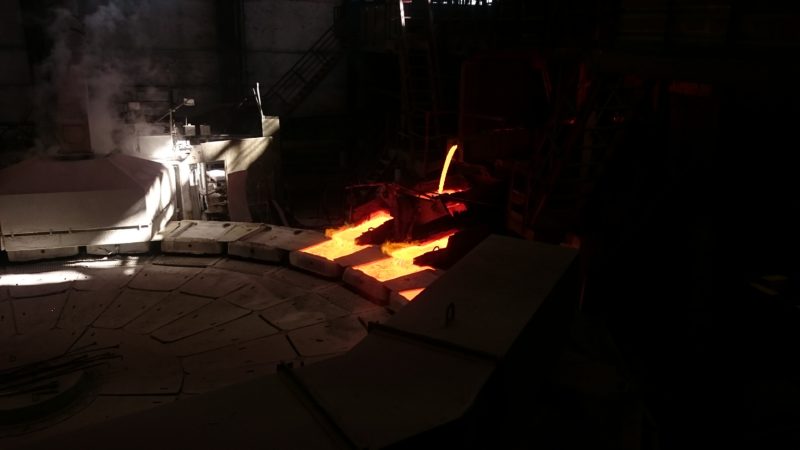
During the week (11.09. –17.09.) Apple launches a new iPhone and North Korea launches a new missile.
4th Ural Industrial Biennial has from its first instalment sought out locations from the historically and currently significant region in terms of production at the Urals – a mountainous region that holds a vast amount of natural resources and thus has been the site of the industrialization from 18th century onwards.
Yekaterinburg – serving as the main site and capital of the Sverdlovsk region – was founded in 1723 and its industry then taming the already quite docile Iset river.
The clever idea of utilizing the factories themselves and the history – as well as the present condition linked to them – has been the driving force of the Ural Industrial Biennial, organized by NCCA – the local branch of centres of contemporary art in Russia. The commissioner Alisa Prudnikova, the artist-in-residence programme curator Zhenya Chaika and the curator of the main exhibition this year João Ribas, have created a biennial that for a first-time visitor in Urals also gives hints and links to “the surroundings” – widely understood here as the current contemporary culture, it’s techniques of distribution of information, the new technologies part-taking and producing new forms of understanding. The theme being distilled in the words ”New Literacy”. The task at hand for the visitor of the biennial is to examine this exhibition, keeping this term in close proximity when excavating and processing the underlying idea. The term is a projection of the future from of where we are now; of what is this new literacy that is currently (still forming).
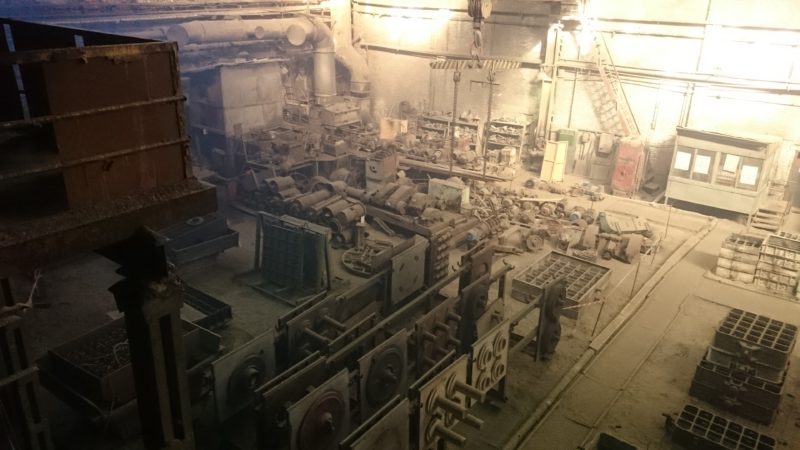
The main exhibition was divided in to three themes: IMAGE AS WITNESS, CAPITALIST CHOREORAPHIES and THE PERSISTENT WORD – portrayed with some sixty pieces as well as introducing the themes with some seminal works, starting with the Lumiére brothers. Maybe showing ‘Workers Leaving the Factory’ (1895) is a bit too much on the point (the fact is that until 2015 the instrument-making plant that serves as a main site for the biennial was still in operation) but maybe me noticing this is a remark for myself – where would I be departing if not from here – from the history and the notion that we are embarking on a new image of the contemporary (of its vernacular), of its factory and its workers. The ‘new’ including new forms of work, social conduct, new parallels of leisure and work-time, of leaving and entering.
This theme (work) is more or less in the focus in the 1st floor of the main exhibition, it has works such as Pilvi Takala’s The Trainee (2008), Mika Rottenberg’s “factory fatigue”-piece Minus Yiwu (2017) and also Urban Fauna Labarotory’s Sauna (where the excess energy captured from bitcoin harvesting was being circulated and used to heat a green-house). At second floor the overall sense of witness accounts was present (also quite literally manifested in some works, like essentially in the piece by Harun Farocki: Eye/Machine (2002), the piece by Forensic Architecture: The left-to-die-boat (2014) – depicting surveillance in Mediterranean and asking about when does the information/data turn into a call for action? Maybe more punctually, why doesn’t it?
Understanding the working condition involves examining the manipulation and movements of the body and the objects, materials, and workforce that are being moved from place to place under the capitalistic conditions. When conditions shift, the movements adjust, change or disappear. Surveillance is manifestation of culture’s interest – and the question is; when does the culture of sensing, gathering, experiencing lead into censorship? Be it either placed upon you or evoked within. I follow the careful erasing of unwelcomed exposure of body parts in images Eric Baudelaire’s work [sic] from 2009 and listen how paintings removed from a museum are being described from memory in Melvin Moti’s piece No Show (2004). There is this human task at hand, of compensating for the possible lacks, a sort of patching up job.

Pointing that the introduction of a new methods or ‘new literacy’ also brings with themselves new forms of hindering and obstruction is a way to bring into view the – sometimes embedded – processes of evaluation. Since it’s not the free-flow of knowledge or possibilities that we are dealing with it’s always at the same time the limited capacities (of our bodies, minds, and technologies, of our literacies). And new (as well as old) literacy capacities are not evenly accessed even though we are connected through the “smart” apparatuses of technology, providing us with the vast array of images and information of which flows and currents of which we navigate.
In the third floor of the exhibition – with its dedication more to the signalling and to the signs themselves as methods or tools we use and create – we sense the strength of the new; the positive capacity of expression and imagining. From Otto Neurath’s Pictoral Statistics and the Vienna Method 1932; Reconstruction of the Soviet Union Under the Five-Year Plan from 1933 to the esoterism and cacophony of zine culture. The ventilation (of feelings, thoughts and aspirations) having an outlet.
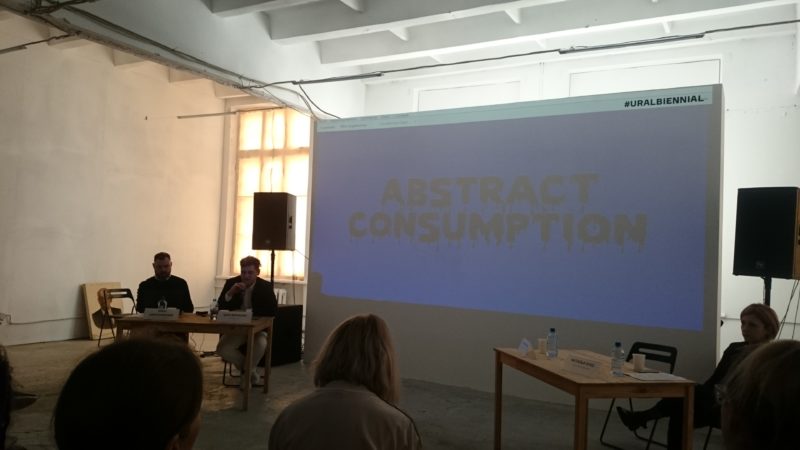
The topic(s) of the exhibition were being delved further in the discussion programme/symposium titled Everyday Revolution that was created to the side of the opening week and also as a part of the professional preview program. These discussions are usually placed as a way to answer “where are we going / what should be done” – type of questions and stretch the exhibitions survey of the theme further in terms of navigation towards future. This might be my own perception based on the discussions that I attended – like (Im)Perfect Futures and The Tropes of Everyday Life that touched upon issues like of how technology affects (for better or worse) our capabilities as well as everyday possibilities and dreams.
There were of course biennial’s side projects like ‘TABU. Territory of Avantgarde: The Big Ural’, a project planned by Dmitry Moskvin dedicated to providing information of the history of Soviet Industrialization and its avant-garde experiments of architecture, especially the constructivism. The tour connected to the biennial took us around the constructivist buildings and gave us also introduction to the city as well. And the parallel program (including exhibitions arranged by various organizers and happening around the city, many opening during the biennial’s opening week) was an effort as well into widening the scope pf perception. (Other museums, art institutions or locations normally used for other purposes – like the Railway Workers Palace of Culture or Yeltsin Center). As a default with the parallel program the connection between the main event’s themes are loose and interpretive, but nonetheless gives insight into an array of different perspectives and artistic (and curatorial) approaches.
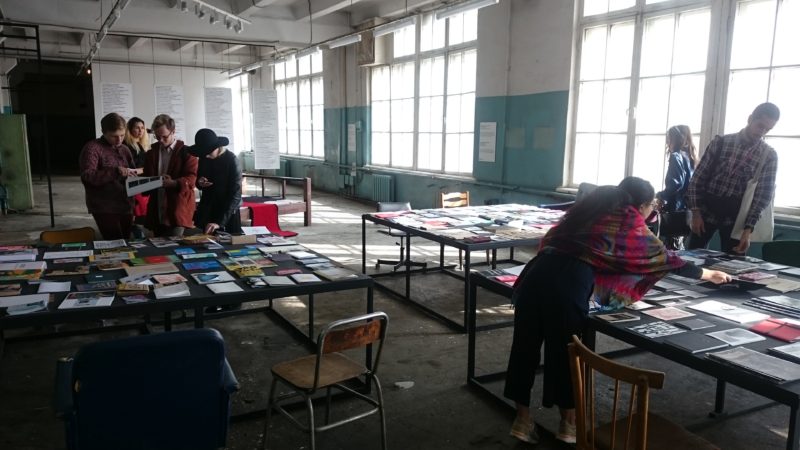
The reason why we (the curators behind the Connecting Points Programme) wanted to make this excursion as a part this programme was to enable a way for art professionals to be introduced, not by just the particular subject matter and the perspective that the Ural Biennial had, but also provide an access and strengthen the connectivity towards the art scene and its practitioners in this particular location in Russia. Visiting a site is always an excavation of what is there. And it is always very essentially about (very broadly understood) the surroundings. When participating on the trip to Kyshtym, a small town in the Ural region about 200 km from Yekaterinburg, in relation to the artist-in-residence programs tours (which as anyone might expect where the exotic and intriguing part) and seeing not only how copper was being made and the 19th century plants still being used, but also how art works inserted there – inside the overall framework of the biennial – become a sort a link, a navigation point, the way to have an access to the area. Where this departs from tourism is the crucial question and pointing to the question – what do we do with this experience? How the information (knowledge even) gathered forms or gives way to the new (understandings, readings, truths maybe)? Certainly, the spreading into various locations is a token of contemporary biennials. And you always expect to find something where the effort made with the artistic gesture and the location it is presented benefit from each other.
Sometimes actual moving, sensing, experiencing bodies are the only way to grasp something. But also provide a way to pinpoint one’s lack of literacy, the gasping involved in experiencing, but yet not understanding. One aspect as a part of gaining new literacy is the problem of assessing when we are fluent.
(or do we even want to be).
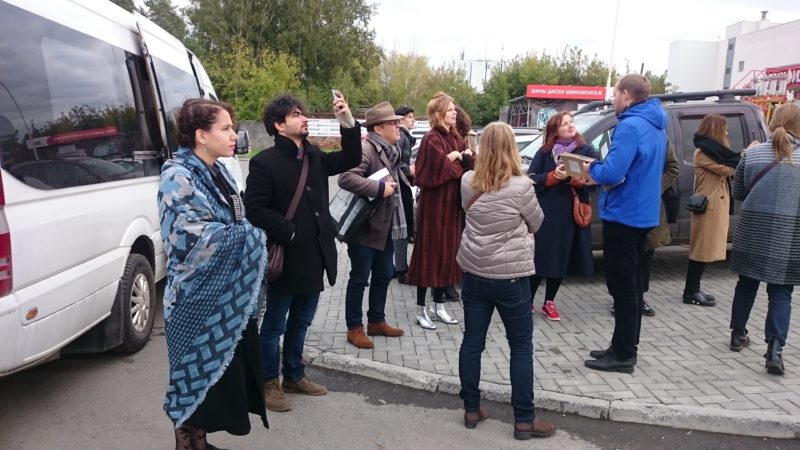
Participants were:
Miina Hujala & Arttu Merimaa (Connecting Points / HIAP)
Giovanna Esposito
Pontus Kyander
Maija Kasvinen
Jani Andreas Purhonen
Vilja Byström
Christine Langinauer
Mari Männistö
Maria Stepkina
Jaakko Blomberg
Piritta Puhto
Agnieszka Pokrywka
Aino Frilander
Assistant to Connecting Points programme, summer 2017:
Fekla Khromova-Borisova
All photos: Arttu Merimaa
